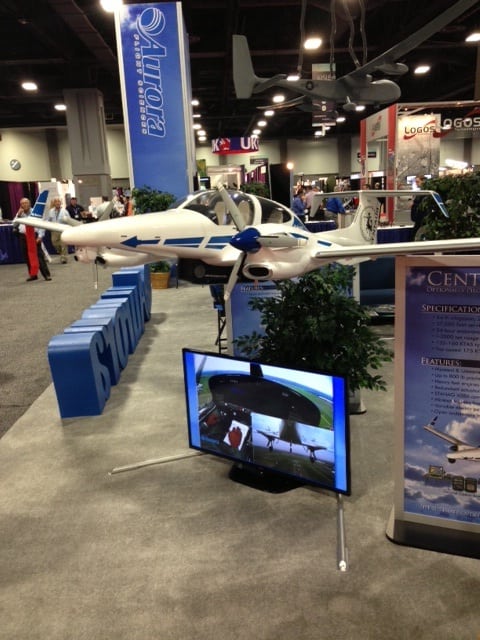 Researchers from Harvard have teamed up with Aurora Flight Sciences to use their optionally piloted aircraft (OPA), the Centaur, to measure carbon isotopes on melting permafrost in Alaska.
Researchers from Harvard have teamed up with Aurora Flight Sciences to use their optionally piloted aircraft (OPA), the Centaur, to measure carbon isotopes on melting permafrost in Alaska.
The research team is flying low level manned flights, currently with the Centaur, though the Aurora team will be looking to perform unmanned flights with Harvard in the future, as the project will be an ongoing annual occurrence in the region.
“We fly very low level, and the Centaur has a boom coming out of the universal nose in the front that captures the gases, and Harvard’s researchers will be using that to assess just how much methane and carbon dioxide is coming off that permafrost,” said Thorsten Hisam, manager of business development at Aurora.
The Centaur, an OPA based on Diamond’s DA42 twin engine propeller aircraft, is equipped with Triplex avionics and is “payload agnostic,” according to Hisam, meaning it can be equipped with a variety of payloads according to operator needs.
Hisam said Aurora expects to conduct the project for several years, so that researchers can keep comparing annual results. Harvard reached out to Aurora because of their reputation within the New England region, as the company has an office on the campus of the Massachusetts Institute of Technology.
Aurora is continuing to develop the unmanned capabilities of the Centaur, as it prepares for FAA to integrate UAS into the National Airspace System and begin issuing more type certificates for OPAs so that it can be operated exclusively as a UAS within civil airspace.
“We will be working on some sense and avoid technology so the aircraft can sense other aircraft,” said Hisam. “We’re also working to integrate more sensors so that they work from the ground control station.”
The Aurora-Harvard Alaskan permafrost research project is currently underway, and is scheduled to be completed by November.